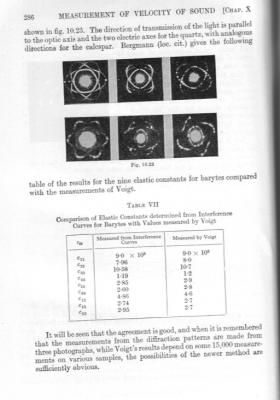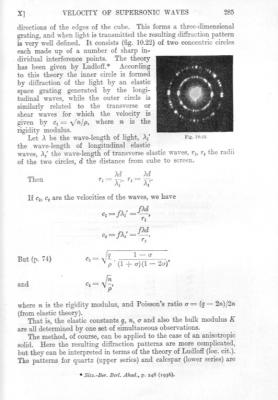-
Posts
18423 -
Joined
-
Last visited
-
Days Won
107
Content Type
Profiles
Forums
Events
Everything posted by studiot
-
Yes it is the condition for this
-
It is interesting how this relates to the safety factors I was talking about.
-
+1 to Bignose for have far more patience than I do and for putting many of my thoughts more politely than I could. There is one further point, howevr, that I mentioned in post36, that has not received sufficient attention. All the discussion about statistics so far in this thread has been about analysis. It is far, far easier to find formula to analyse something that is already there (or given). A rocket of mass, m ; a cylinder of gas of volume, V and so on. than it is to put something specific in place. This process is called synthesis and statistics has greatly helped improve Man's ingenuity in the real world to synthesise. For instance if you have a valley, there is no formula that says bridge = XXXX or roadway embankment = that The design of such a bridge or embankment is part of the process of sythesis and statistics plays a vital part in the modern world of design. Again when someone goes to construct this embankment, there is nothing there to start with. Just uneven, sloping ground. He knows where the top of the embankment is to end up But he has to start at the bottom and build up. So what does he say to the first lorry driver who says here is your first load of fill material, where shall I dump it? In other words where is the edge of the base of the embankment? Incidentally statistics will not help answer this question, any more than deterministic geometry or mechanics. In school most questions are about analysis and usually deterministic. It can be a great shock on entering the real world where most activity is about synthesis and neither deterministic or even capable of being expressed by formula.
-
To quote M Escher Note : both artist and purely objective rules are mentioned. So was Escher artist or scientist or a mixture of both or neither?
-
Why not pick a particular chemical reaction and work on that to start with, before trying for a more all embracing theory? My Questions have been designed to elucidate information for anybody to try to help. I wish to avoid an argument about what actually participates in chemical reactions so I said "in general". I am sure there are always the famous exceptions. This is because of the stated objective of the thread. I still maintain that the principal players are the electrons. - in general. I am still not sure what exactly you are trying to calculate and from what starting point? By this I mean what are your proposed input variables and output variables? An electron has potential energy due to the potential field it finds itself in. This field is generated by the presence of the nucleus or nuclei. If there is to be a an unforced reconfiguration (which is what a chemical reaction is) then it will be energetically feasible if the end configuration has lower PE than the initial one. So it seems sensible to proceed by studying the calculation of these energies. For this a good starting point might be the book by Atkins and Friedman Molecular Quantum Mechanics
-
Does an observer in the same intertial frame as the mass and spring observe the mass as increasing? In particular does the spring 'observe' an increase in suspended mass?
-
Look here for brachistochrone. http://www.google.co.uk/search?hl=en-GB&source=hp&q=brachistochrone&gbv=2&oq=brachistochrone&gs_l=heirloom-hp.1.0.0l10.1297.4797.0.10735.15.10.0.5.5.0.172.1469.0j10.10.0....0...1ac.1.34.heirloom-hp..0.15.1657._XFvibAUHQM
-
Yes I suppose you could say that.
-
In M De Sautoys book he tells of finding the full set embodied in the tiling in the Alhambra. A good thousand years before Escher - though that is not to detract from Escher's achievements. And, by the way, I gave my answer to your earlier question.
-

Is This a Valid Way to Divide by Zero?
studiot replied to Asterisk Propernoun's topic in Speculations
First part The idea that division by zero results in a blank (I prefer the word blank to your "nothing" since nothing can mean zero so blank is less confusing) is contrary to the closure requirement from set theory. That is every operation of the type A/B must result in another member of the set Division by zero cannot achieve this.. When folks start to contemplate dividing by zero they usually quickly move off set theoretical ideas of what a number is and limit their discussion to the counting property of numbers. You have done the same here, and quickly shown that we do not need negative numbers for counting. -
-
What is this if not a continued personal attack against professionals?
-
Gosh didn't I mention that somewhere else recently? JC, I am only trying to help clarify alkis3's questions since he genuinely wants to achieve something.
-
You started this thread with a perfectly reasonable proposition for debating purposes. However you also added an extremely insulting allegation against professionals, which you have further promoted throughout the thread. The truly professional way to discuss something when there is a difference in point of view is to pool all the known facts and information and examine them dispassionately to try to jointly arrive at the truth. I have tried to offer this process, but without cooperation. I therefore reluctantly come to the conclusion that the true purpose of this thread is to foster an argument. Finally, your use of the word certain seems to me to mean what is commonly called 'deterministic' in Science rather than the real meaning of the word certain. I can count three tablets and establish that there are three. There is nothing deterministic about this. However 3 times 2 makes 6 is deterministic, but can also be called certain. The following link may help you with some scientific terms and also has some interesting things to say about the thread subject matter. http://abyss.uoregon.edu/~js/glossary/clockwork_universe.html
-
Chemical reactions do not, in general, involve nuclei. I assume you mean the nuclei of atoms. Nuclear reactions involve atomic nuclei. Are you referring to the chemical terms electrophilic reactions and nucleophilic reactions?
-
Why do you not answer my questions? How can we have a dicussion if I am supposed to believe everything you say but you are allowed to ignore all that I say?
-
Because if it used a different particle it would not be an electron microscope. This is not a facetious answer, perhaps you do not know that there are many types of microscope? For example the Field Ion micdorscope uses larger particles than electrons. The optical microscope uses particles that, as far as I know, do not constitute a health hazard. So what are you actually trying to say?
-
Looking over this thread I see that several times I have offered friendly pointers and even made a few short unequivocal statements. All of which you have wafted away with an imperious wave of the hand and some rudeness. Considering your fixation with 'certainty', especially in mechanics, I am suprised that having been told that There are mechanical systems where the mathematics cannot be solved and There are mechanical systems where there are no mathematical formulae You have not enquired what I think these are. Are you afraid you might learn something? Did you follow up my pointer to the theory (famous in the history of Sscience) that matched your statements and ideas exactly? What do you actually mean by certainty? Give three warfarin tablets daily is certainty (if three are indeed handed out). But that could kill the patient with nearly 10 times too much warfarin if blue ones are taken instead of brown ones.
-
Since you eschew statistics and also estimation (which is not the same) what is you opinion of approximation theory? Worse, you are looking at mechanics through rose tinted spectacles. There are many problems for which the equations cannot be solved. Worse still there are problems in mechanics that have no explicit equations to solve. I am not saying that statistics is the answer to these, for it is not, but over to you for your opinion.
-
If you ever come to London you will have the opportunity to visit Kew Gardens. What many never see there, hidden away, is the Marianne North Collection. Marianne North was a rich victorian lady who used her inheritance to travel to exotic places. She was an artist, but she never sold anything, she painted purely for pleasure. Wherever she went she sketched and painted the local flora and fauna, many of which were unknown in Europe. These works were so good that they were adopted as the standard representation in botanical and biological texts and her style was copied almost universally. In her will she left the entire collection to the Nation and bequeathed enough money to build a fine housing for it. This museum was constructed in Kew Gardens. It also houses an unrivalled collection of (some polished) wood panels from every tree she could obtain material. Again these are an excellent basis for a collection of scientific samples, although again originall collected for their artistic merit. http://www.google.co.uk/search?hl=en-GB&source=hp&q=marianne+north+gallery&gbv=2&oq=marianne+north&gs_l=heirloom-hp.1.1.0l10.1156.3578.0.5719.14.13.0.0.0.0.250.1984.0j4j6.10.0....0...1ac.1.34.heirloom-hp..4.10.1984.lyvcuc08XQk
-
I was reminded of picks theorem. Google is very artsy about this http://www.google.co.uk/search?hl=en-GB&source=hp&q=pick%27s+theorem&gbv=2&oq=picks+th&gs_l=heirloom-hp.1.0.0i10j0l2j0i10j0l2j0i10j0l2j0i10.1500.4000.0.6531.8.8.0.0.0.0.203.1078.0j6j1.7.0....0...1ac.1.34.heirloom-hp..1.7.1078.b1U92oOu8rY
-
That's an interesting question because either will produce a wavelength and a bit. This is a bit like asking how many decades are there in 0 - 10. I really only posted this to show that I am not picking on swans.
-
So by definition there is more than one answer since there must be at least two answers to superpose.
-
Me too +1
-
Is the cat dead or..................... or if you prefer something mathematical how many solutions has the equation x2 + x - 6 = 0




